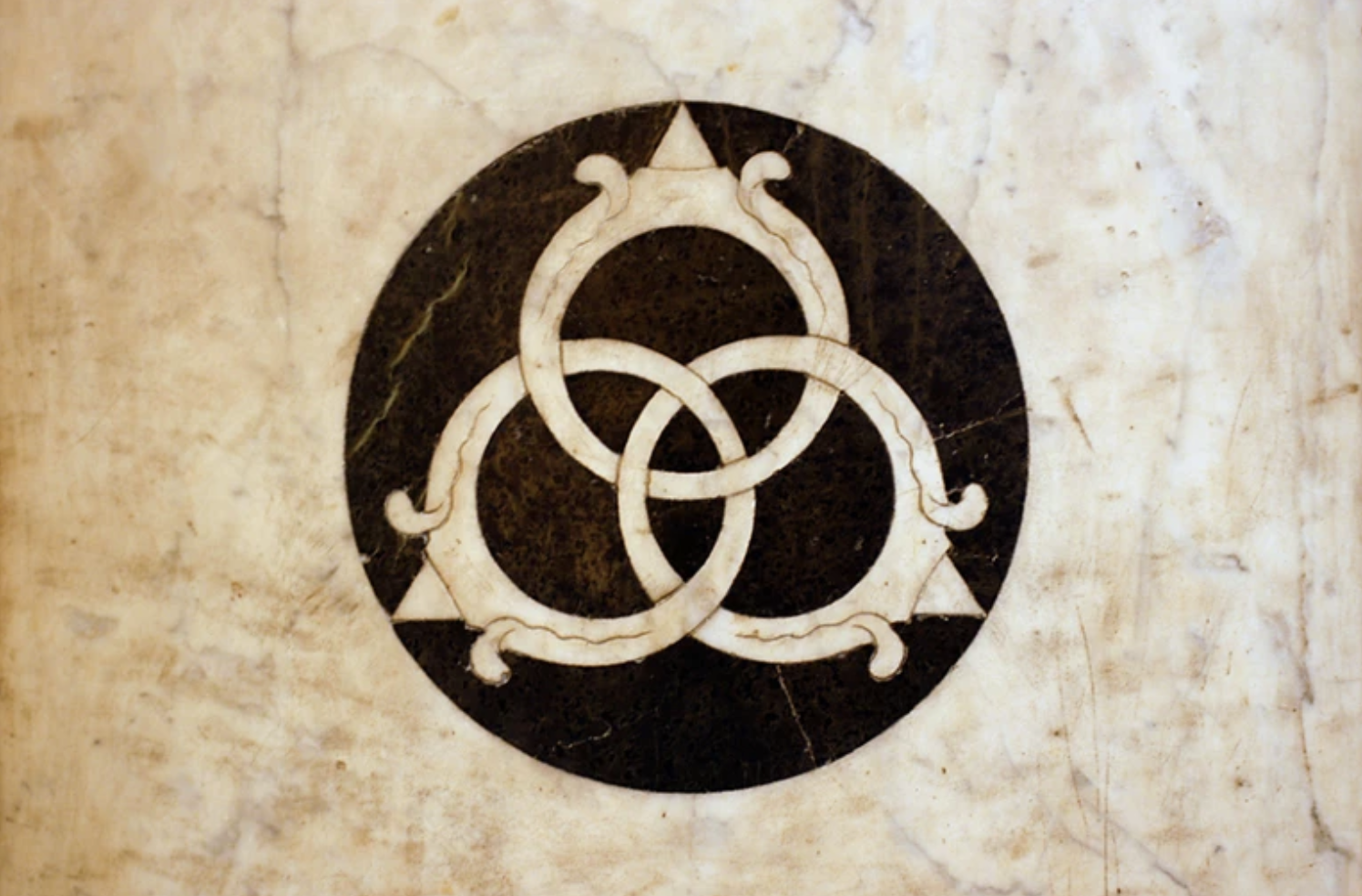
Quantinuum, the trapped-ion specialist quantum computing company formed from the merger of Honeywell's quantum computing unit and a Cambridge-based quantum startup, claims to have unlocked what it calls "the credible path to fault-tolerant quantum computing". That sentence, which throws shade at other fault-tolerance pursuits while promising a walkable road for quantum's future, is supported by the company's latest research into quantum systems.
Published yesterday in pre-print form, the research describes a novel approach connecting Italy's aristocratic House of Borromeo and its coat of arms to the "spooky action at a distance" of quantum entanglement.
The Borromean Rings in House Borromeo's coat of arms are an interesting visual representation of quantum entanglement: that strange phenomenon that leaves groups of particles linked in such a way that they all simply become part of the same system, despite the absence of any type of physical connection or proximity. And just like in a quantum system, to remove one of the rings means to remove the connection between all of them — an equivalent to the phenomenon of quantum decoherence.
Quantinuum's research focused on attempting to connect entangled qubits based on non-Abelian anyons (nonabelions being its shortened version) by crafting their linkages to be like those of the Borromean Rings: the particles move around each other in their circular-like patterns, maximizing the particle proximity (useful to increase coherence times) while adding resilience to decoherence-triggering events. All in all, the team demonstrated quantum entanglement across 32 ion-based qubits.
“No two particles are taken around each other, but all together they are linked,” says Ashvin Vishwanath, a theoretical physicist at Harvard University in Cambridge, Massachusetts, and a co-author of the paper. “It’s really an amazing state of matter that we don’t have a very clear realization of in any other set-up.”
With any new research (and especially in regards to quantum computing, a ChatGPT-level hype machine), it's important to be aware of both proponents and detractors.
Commenting on Quantinuum's published paper to Nature, Steven Simon, a theoretical physicist at the University of Oxford, UK, said that there is "enormous mathematical beauty in this type of physical system, and it’s incredible to see them realized for the first time, after a long time.”
Michael Manfra, an experimental physicist at Purdue University in West Lafayette, told Nature that Quantinuum's machine didn't truly create nonabelions; rather, it simulated their properties (and only some of them, at that). Quantinuum concurs - but they also argue that the particles behave in such a way that it satisfies the nonabelion definition, and that the checkmarks for a fault-tolerant quantum computing system were there.
So while the "credible path" bit may need some more looking into, there's apparently no doubt that Quantinuum's results are achievements unto themselves.
Interestingly, Quantinuum's research and claims of a road found for true quantum computing scaling collides with Microsoft's own — the company is also pursuing topological qubits in its quantum computing work, a different way of going about quantum systems than Quantinuum's earlier ion chain qubits and IBM's superconducting qubits, for instance.
But while Quantinuum's approach simulates the topological behaviors of nonabelian qubits to take advantage of the "Borromean Ring" effects on robustness, Microsoft is pursuing qubits made of physical anyons themselves — an approach that could provide much stronger benefits than the approach taken by Quantinuum.
All in all, there are still questions on whether the "credible path to fault tolerant quantum computing" was unlocked with yesterday's pre-print publication or not. But steps have been taken forward; Quantinuum will now surely be trying to find out where it ends.







